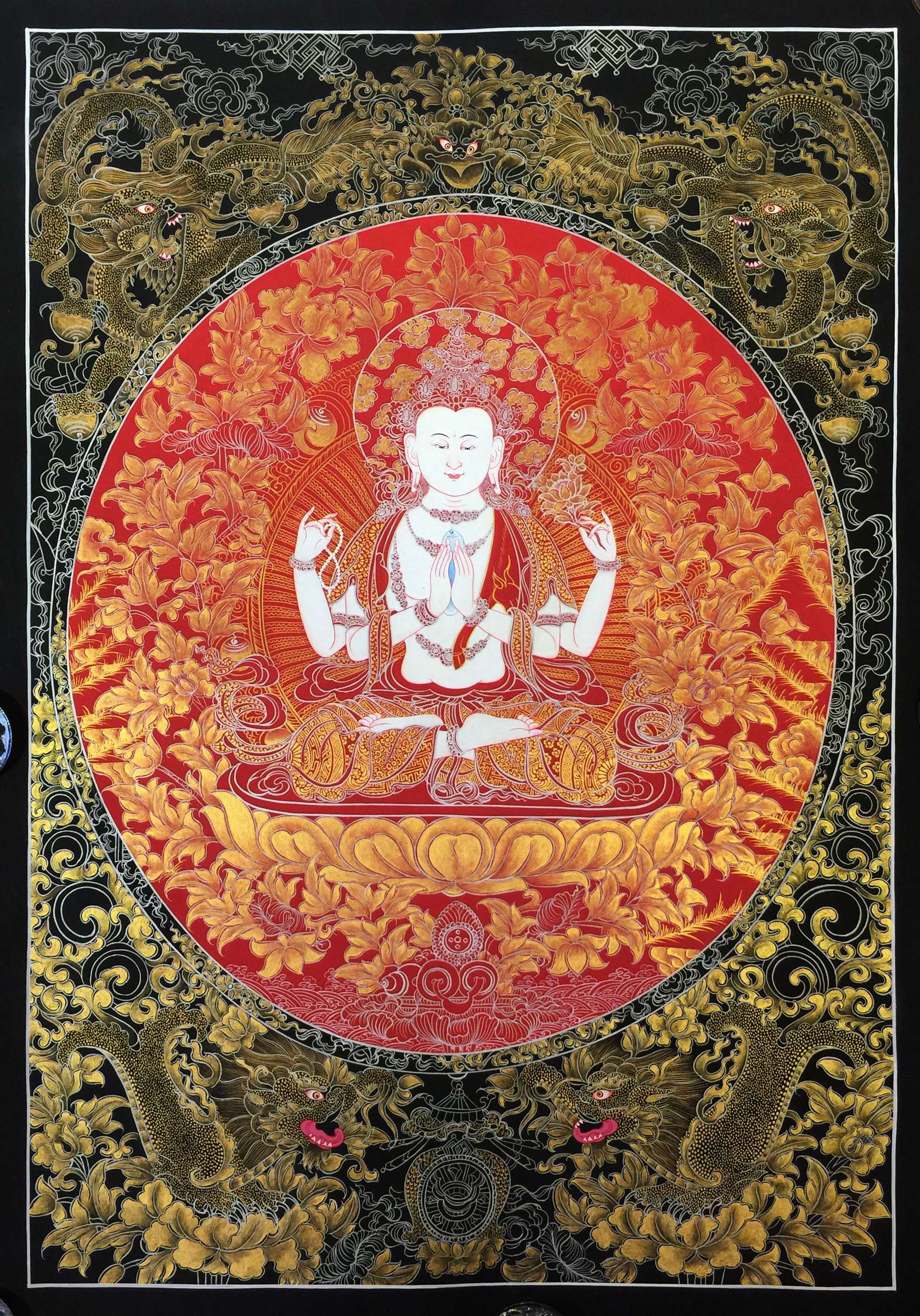

The Bodhisattva of Compassion Chenrezig
In the Tibetan Buddhist pantheon of enlightened beings, Chenrezig is renowned as the embodiment of the compassion of all the Buddhas, the Bodhisattva of Compassion.
Legendary History
According to legend, Chenrezig made a vow that he would not rest until he had liberated all the beings in all the realms of suffering.
After working diligently on this task for a very long time, he looked out and realized the immense number of miserable beings yet to be saved.
Seeing this, he became despondent and his head split into thousands of pieces. Amitabha Buddha put the pieces back together as a body with very many arms and many heads so that Chenrezig could work with myriad beings all at the same time.
Iconography
Sometimes Chenrezig is visualized with eleven heads, and a thousand arms fanned out around him. Chenrezig may be the most popular of all Buddhist deities, except for Buddha himself -- he is beloved throughout the Buddhist world.
He is known by different names in different lands: as Avalokiteshvara in the ancient Sanskrit language of India, as Kuan-yin in China, as Kannon in Japan.
As Chenrezig, he is considered the patron Bodhisattva of Tibet, and his meditation is practiced in all the great lineages of Tibetan Buddhism.
The beloved king Songtsen Gampo was believed to be an emanation of Chenrezig, and some of the most respected meditation masters (lamas), like the Dalai Lamas and Karmapas, who are considered living Buddhas, are also believed to be emanations of Chenrezig.
Compassion and Love
Whenever we are compassionate or feel love for anyone, or for an animal or some part of the natural world, we experience a taste of our own natural connection with Chenrezig.
Although we may not be as consistently compassionate as some of the great meditation masters, Tibetan Buddhists believe that we all share, in our basic nature, unconditional compassion and wisdom that is no different from what we see in Chenrezig and in these lamas.
Mantra
We might have trouble believing that we are no different than Chenrezig -- but learning about the nature of compassion, and learning about Chenrezig, repeating his mantra Om Mani Padme Hum and imagining that we would like to be like Chenrezig, pretending that we really are just like Chenrezig, we actually can become aware of increasing compassion in our lives, and ultimately, the lamas tell us, awaken as completely wise and compassionate buddhas.











